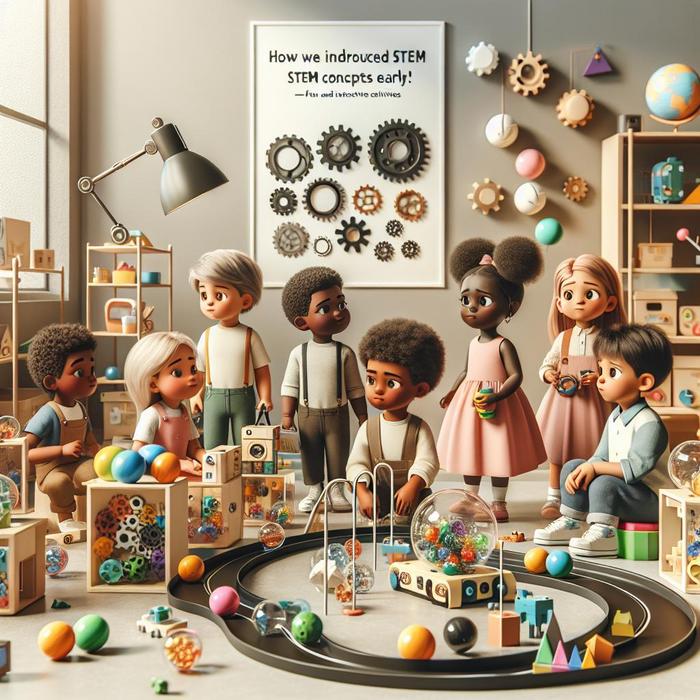Creating a Rich Environment of Early STEM Learning
Introducing science, technology, engineering, and math (STEM) concepts to children at a young age is beneficial for their intellectual development. By utilizing educational activities, parents can seamlessly integrate early STEM learning into their child’s daily routine. Let’s delve into some exciting ways to introduce science and math to your little ones!
The Importance of Early STEM Learning
Engaging your child in STEM activities early on fosters curiosity, innovation, and problem-solving skills. As outlined by Accelerate Learning, these skills are not only applicable to the STEM fields but are also vital for your child’s overall cognitive development. Furthermore, these activities can be fun and interactive, turning playtime into an educational experience.
Fun and Interactive STEM Activities for Toddlers and Preschoolers
There are countless STEM activities that you can do at home or outdoors to familiarize your child with STEM concepts. Some of these include:
- Building Blocks: Simple toys like building blocks can introduce your child to basic engineering concepts. By stacking and balancing, children understand stability and symmetry.
- Sensory Bin Activities: Sensory bins filled with different materials like sand, water, or rice can be a fun way for children to explore. These activities foster scientific inquiry and observation.
- DIY Weather Station: Taking advantage of nature is a great way to introduce science. With a homemade weather station, children can track changes and identify patterns in the weather.
- Simple Counting Games: According to We Are Teachers, using everyday objects to count can help children grasp mathematical concepts. It can be as simple as counting the number of blocks in a tower.
STEM Toys for Kids
Another way to cultivate early STEM learning is through the use of STEM toys. These interactive toys promote engagement in STEM fields in a fun and playful manner. You can learn more about choosing the right toys in previous posts on baby safety while cooking and homemade baby food recipes and tips.
Ultimately, the key to introducing science and math to your little ones is incorporating learning into daily routines, making it interactive, and remaining patient. With a nurturing environment that values curiosity, your child is sure to enjoy and benefit from early STEM learning.
Making STEM Learning Fun with Interactive Materials
Children tend to learn more effectively when the process is engaging. Thus, using interactive materials that make STEM learning fun is an excellent approach.
- Kitchen Experiments: The kitchen is a perfect place to introduce simple science to your child. For instance, adding vinegar to baking soda causes a fizzing reaction. Such experiments can boost your child’s interest in chemistry.
- STEM Kits: The marketplace offers a variety of STEM kits designed for kids. These kits often include various components for building and experimenting, fostering an understanding of both engineering and science.
- Outdoor Exploration: Outdoor exploration allows children to interact with nature firsthand, promoting their learning of environmental science. The observation of animals, insects, and plants in different seasons can be a practical lesson in biology and environmental conservation.
- Mobile Apps: As children grow, introducing tech-based learning tools can be advantageous. There are numerous mobile applications that have interactive games designed to promote STEM learning.
STEM Learning Through Play
Stem learning can be conveniently integrated with children’s playtime to create a fun-filled educational experience.
- Bean Bag Maths: An enjoyable and interactive way to teach your child mathematics is through the use of bean bags. By employing the beanbags in tossing and catching games, you can teach your child counting and basic addition or subtraction.
- Engineering with Clay: Teaching basic engineering concepts can be as fun as playing with clay. Children can mold shapes, build structures, and work on their spatial skills all at the same time.
- Technology through Storytelling: Use storytelling time to introduce concepts like coding and programming. Stories revolving around these themes can nurture your child’s interest in technology.
Encourage STEM Learning at an Early Age
By integrating STEM learning into everyday activities and making it fun and interactive, you can keep your child engaged and excited about the possibilities of science, technology, engineering, and math. Whether through kitchen experiments or nature walks, these experiences encourage your little ones’ creativity and curiosity. And remember that STEM learning isn’t confined to a classroom – you can prepare your child for a future filled with innovation and discovery right at home.
Importantly, don’t shy away from introducing STEM concepts early, even if your child is just a toddler. Encourage wonder. Ask open-ended questions that promote exploration and discovery. The earlier children begin interacting with STEM concepts, the better equipped they will be for learning in later years.
